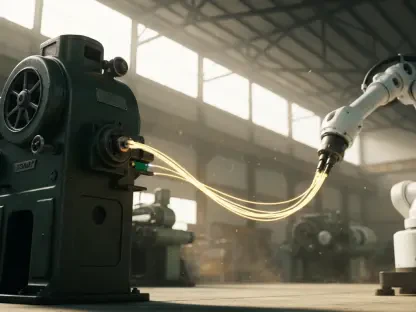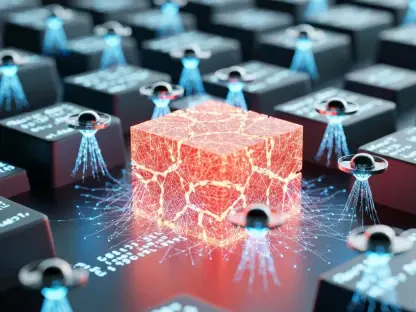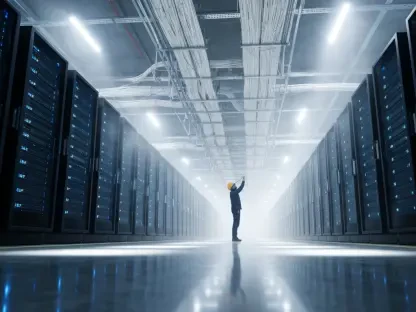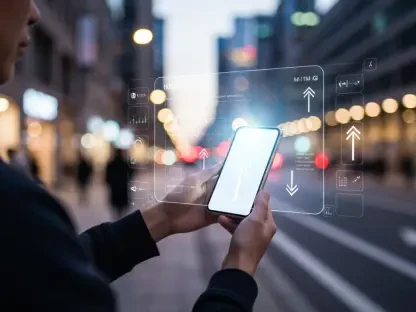Imagine a world where machines with arms, legs, and a human-like frame seamlessly navigate homes, workplaces, and public spaces, performing tasks from caregiving to disaster response with remarkable ease. Humanoid robots—designed to mirror the human body and often walking upright on two legs—have sparked a blend of fascination and debate across technological and societal spheres. This drive to create robots in our image isn’t merely a trend; it taps into deep-rooted cultural aspirations, practical necessities, and ambitious economic forecasts. As technology races forward, the question lingers: what fuels this persistent push to build machines that resemble us, and what does it reveal about human ambition? Exploring this topic uncovers a complex interplay of innovation, imagination, and real-world challenges that could redefine how humanity interacts with machines in the coming decades.
The Practical and Cultural Drivers
Designing for Human Spaces
The allure of humanoid robots lies significantly in their ability to operate within environments tailored for human bodies, offering a versatility that specialized machines often lack. Unlike a robotic vacuum confined to floors or a factory arm limited to repetitive motions, robots shaped like humans can climb stairs, open doors, and maneuver through tight spaces in homes, offices, or urban settings. This adaptability positions them as potential all-purpose tools, capable of handling diverse tasks without the need for extensive redesigns of existing infrastructure. From reaching high shelves to navigating crowded streets, their form aligns with the world humans have built, making them a logical fit for integration into daily routines. The promise of such flexibility drives significant interest from developers aiming to create solutions that can address multiple needs at once, reducing the reliance on single-function devices.
Beyond mere functionality, the human shape offers a practical bridge to seamless interaction in social and professional contexts where familiarity matters. A robot with a recognizable form can more easily blend into settings where people expect intuitive engagement, such as assisting in retail or providing support in healthcare facilities. This design choice minimizes the learning curve for humans interacting with these machines, as their movements and postures echo natural human behavior. Moreover, environments already equipped with tools and layouts for human use—think door handles, seating, or workstations—require minimal adjustment to accommodate a humanoid robot. This inherent compatibility underscores a key reason for their development: the potential to slot into human-centric spaces without disrupting established systems, paving the way for broader acceptance and utility across various sectors.
Echoes of Imagination and History
The pursuit of humanoid robots is deeply rooted in a cultural fascination that predates modern technology, reflecting a longstanding human desire to replicate our own image in machines. From the haunting Maschinenmensch in the 1927 film Metropolis to the endearing C-3PO of Star Wars fame, fictional representations have long shaped public perception and inspired real-world innovation. These early depictions, often brought to life by actors in costumes, planted seeds of expectation that technology has since strived to meet. The unveiling of WABOT-1 in Japan in 1972 marked a pivotal moment, transforming imagination into tangible progress and setting a precedent for future advancements. This historical backdrop reveals a persistent curiosity about creating companions or counterparts that mirror human form, blending art with engineering in a quest to push boundaries.
This cultural thread extends beyond entertainment, influencing how society views the role of technology in replicating human essence. The idea of a machine that not only looks like a person but also embodies aspects of human behavior taps into philosophical questions about creation and identity. Such narratives have fueled decades of research and public interest, sustaining momentum even when technological limitations slowed progress. Humanoid robots, in this sense, are more than tools; they represent a canvas for exploring what it means to be human through the lens of artificial constructs. This intersection of storytelling and science continues to drive investment and innovation, as each breakthrough brings society closer to realizing visions once confined to the realm of fiction, highlighting a profound connection between cultural dreams and technological reality.
Economic and Technological Horizons
The Financial Promise of a New Industry
The economic potential surrounding humanoid robots has ignited a frenzy of investment and speculation, with industry forecasts painting a transformative picture for the coming decades. Reports from financial giants like Goldman Sachs estimate the global market for these robots could reach $38 billion by 2035, driven by applications spanning healthcare, entertainment, and hazardous labor. Predictions suggest millions of units could be in operation worldwide within a similar timeframe, with some analysts envisioning an industry rivaling the scale of automotive or consumer electronics like smartphones. Major players such as Boston Dynamics, Tesla, and Figure AI are channeling substantial resources into development, betting on a future where humanoid robots become integral to multiple sectors. This financial optimism underscores a belief in their capacity to redefine markets and create unprecedented opportunities.
Further fueling this buzz is the diverse range of roles humanoid robots are expected to fill, promising both profitability and societal benefits. In healthcare, they could serve as assistants or caregivers, addressing labor shortages and supporting aging populations. In dangerous fields like mining or disaster response, they offer a safer alternative to human workers, potentially saving lives by taking on high-risk tasks. The hospitality and service industries also stand to gain, with robots capable of performing customer-facing roles or routine maintenance. Such versatility amplifies their economic appeal, attracting startups and established corporations alike to compete for dominance in an emerging field. As projections point to exponential growth, the race intensifies to turn ambitious forecasts into reality, positioning humanoid robots as a cornerstone of future economic landscapes.
Navigating the Technical Barriers
Despite the enthusiasm, crafting a robot that mirrors human movement and cognition remains a formidable challenge, with current technology often falling short of lofty expectations. Advances in artificial intelligence, particularly in areas like reinforcement learning and imitation learning, have enabled significant strides in basic functions such as walking, running, or recovering from physical disruptions. However, many humanoid robots still depend on human operators for complex decision-making, lacking the autonomy needed for real-world scenarios. Issues like navigating uneven terrain or responding to unexpected obstacles reveal gaps in their capabilities. These limitations highlight the intricate engineering required to replicate even fundamental human actions, underscoring why progress, though promising, remains incremental in this domain.
Another hurdle lies in the realm of social intelligence and contextual understanding, where humanoid robots often struggle to adapt appropriately to diverse interactions. For instance, discerning the nuances of engaging with a child versus an elderly person—factoring in physical, emotional, and cultural sensitivities—proves elusive for current models. Most robots operate effectively only in controlled environments, faltering when faced with the unpredictability of everyday settings. A significant breakthrough would involve enabling robots to learn directly from human demonstrations, such as mimicking household tasks like dishwashing after observation. Until such adaptability and situational awareness are achieved, the vision of fully independent humanoid robots will remain out of reach, tempering the pace at which they can integrate into broader societal roles despite ongoing advancements.
Societal Implications and Future Outlook
Balancing Hype with Realistic Timelines
Amid soaring predictions about humanoid robots becoming household staples, a critical gap persists between public expectations and the current state of technology. While some industry voices suggest these robots could be commonplace in homes within the next decade, others caution that such timelines may be overly ambitious. Present-day models often lack the dexterity for fine motor tasks and the cognitive depth for quick, nuanced decision-making in dynamic environments. Consider a robot attempting a simple chore like folding laundry—beyond basic mechanics, it must grasp variations in fabric, shape, and purpose, a level of understanding still beyond reach. This disparity fuels a necessary discussion about tempering enthusiasm with pragmatism, ensuring that development focuses on achievable milestones rather than unattainable promises.
This tension between hype and reality also shapes how society prepares for the integration of humanoid robots into daily life, raising questions about readiness and acceptance. Public perception, often influenced by science fiction, may expect near-human capabilities sooner than technology can deliver, potentially leading to disappointment or skepticism. Meanwhile, developers face pressure to demonstrate practical value in shorter timeframes, balancing innovation with consumer trust. The uncertainty around adoption timelines—from testing in controlled home environments to widespread use—underscores the need for clear communication about progress. As research continues, aligning expectations with tangible advancements will be crucial to fostering a supportive environment for this technology’s eventual rollout across various sectors.
A Mirror to Human Ambition
The drive to build robots in human form transcends utility, touching on a profound impulse to reflect humanity in artificial creations. This endeavor isn’t solely about solving practical problems; it’s a creative act, akin to sculpting a likeness that embodies both form and potential function. Such a pursuit reveals an intrinsic desire to explore the boundaries of life and intelligence through technology, crafting machines that might one day stand as peers or partners. This mirrors historical efforts in art and science to understand the self through replication, positioning humanoid robots as a modern extension of that quest. Yet, it also prompts reflection on the ethical dimensions of creating entities so closely tied to human identity, challenging society to define their place.
Delving deeper, this fascination with humanoid design signals a broader commentary on human connection and isolation in an increasingly digital age. Robots that resemble us could serve as companions or collaborators, filling gaps in social or labor structures, especially in aging societies or understaffed industries. However, their likeness raises concerns about blurring lines between machine and person, potentially impacting how relationships or trust are formed. Will these robots enhance human interaction, or risk depersonalizing it? As technology advances, these philosophical undercurrents will likely influence regulatory and cultural responses, shaping how closely robots should emulate humans. This dynamic interplay between ambition and introspection continues to propel innovation while demanding careful consideration of long-term implications.
Envisioning a Transformed Tomorrow
Looking ahead, the potential for humanoid robots to reshape daily existence is immense, with applications that could redefine societal norms across multiple domains. Picture a robot caregiver providing consistent support to the elderly, alleviating strain on healthcare systems, or a robotic responder navigating disaster zones to rescue survivors where humans cannot safely tread. In workplaces, they might handle repetitive or hazardous tasks, freeing up human workers for creative or strategic roles. Their ability to integrate into spaces designed for humans—without requiring major infrastructural changes—amplifies their transformative promise. This vision paints a future where technology and humanity coexist more closely, enhancing efficiency and safety in unprecedented ways.
Yet, this optimistic outlook comes with substantial caveats, as the societal impact of widespread humanoid robot adoption remains largely uncharted. Ensuring safety in unpredictable human environments, addressing ethical concerns around privacy or autonomy, and preventing misuse in sensitive contexts are paramount challenges. How will laws evolve to govern their deployment, and what measures will protect against economic disparities if robots displace certain jobs? These questions loom large, demanding proactive leadership from technologists, policymakers, and communities to guide integration. Reflecting on past technological shifts, it’s evident that careful planning paved the way for acceptance and benefit. As strides were made in earlier decades to balance innovation with responsibility, the journey of humanoid robots must similarly prioritize thoughtful strategies to ensure they serve as allies in enhancing human life.









